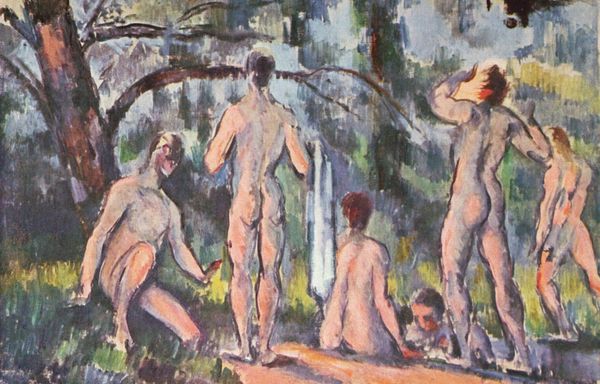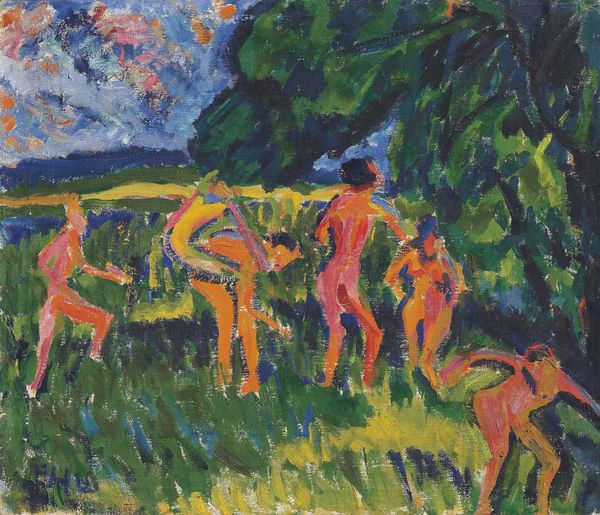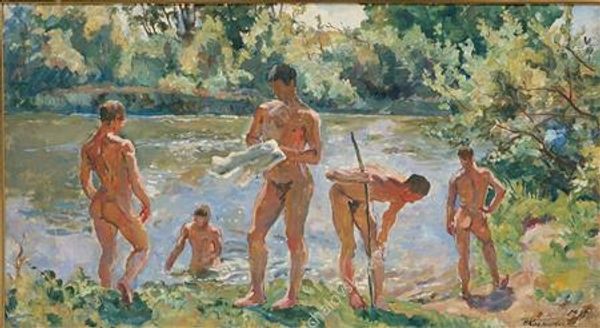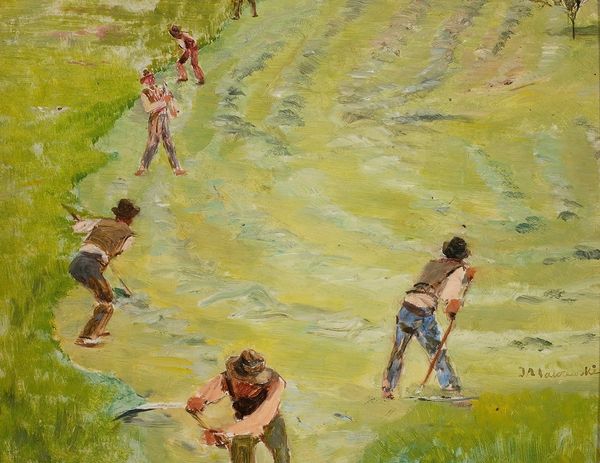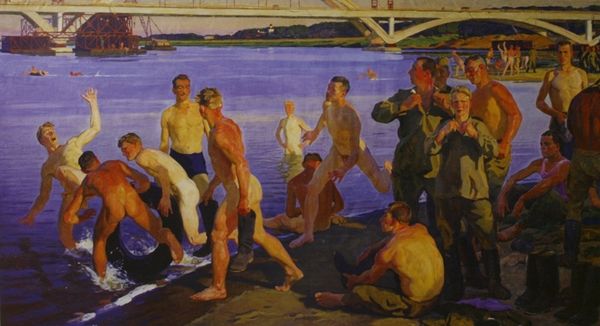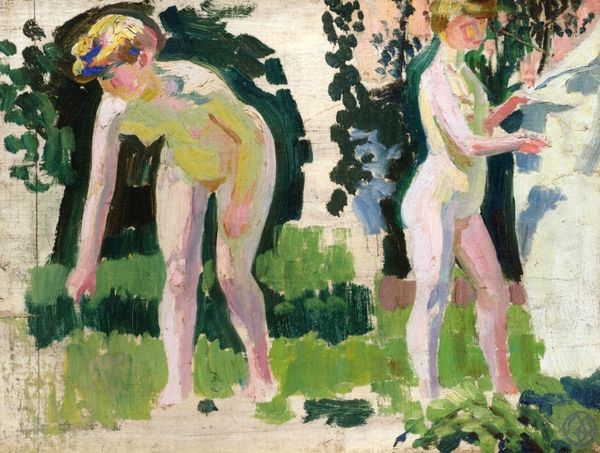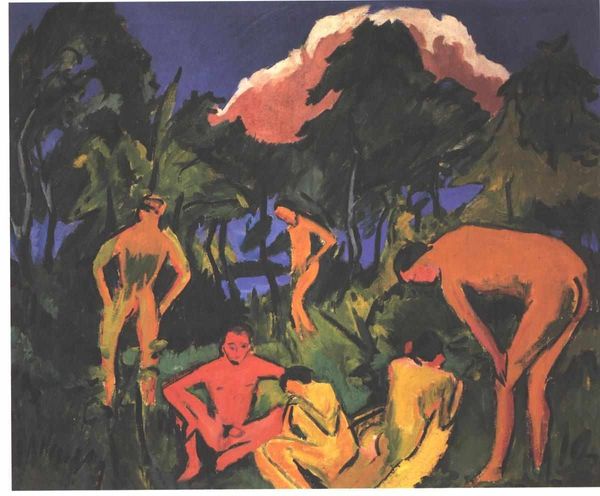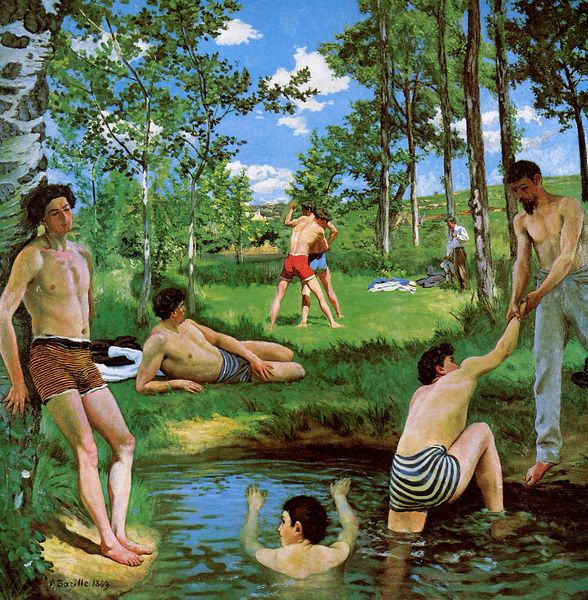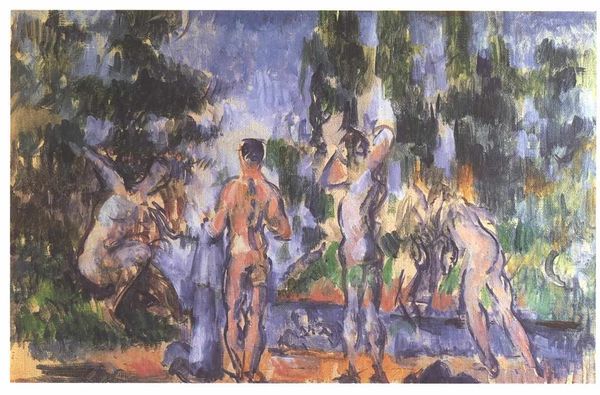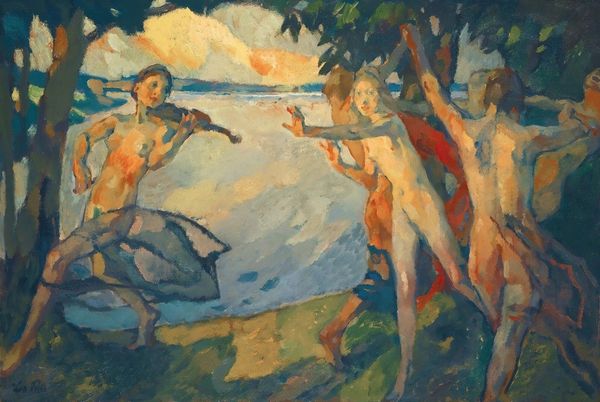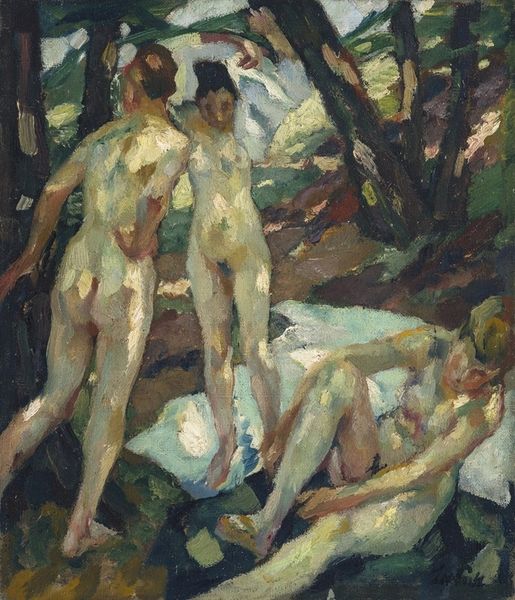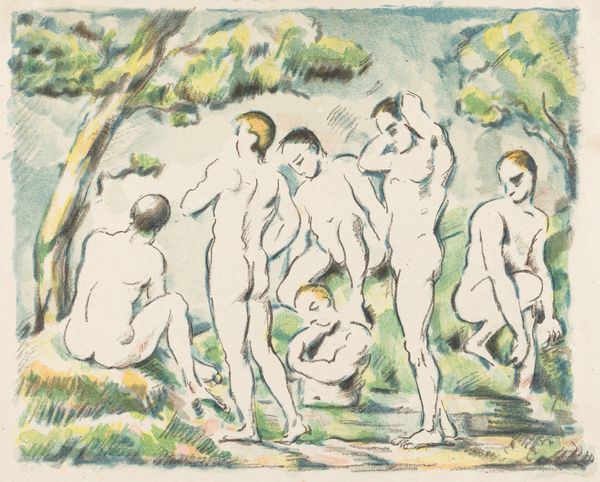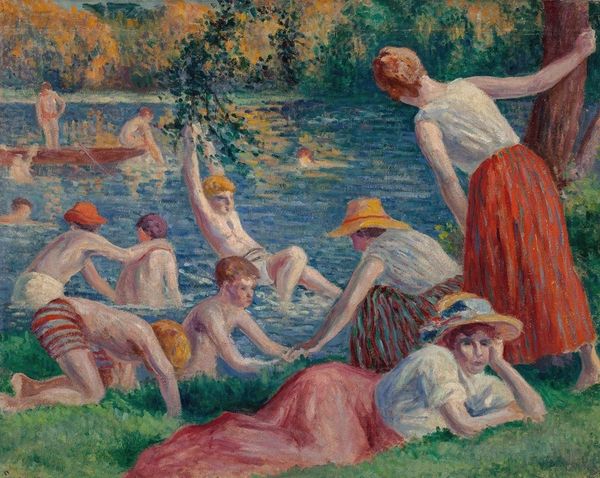
Copyright: Pyotr Konchalovsky,Fair Use
Editor: Konchalovsky's "At Summer," painted in 1939 using oil paints, captures a scene of youthful energy and leisure. The composition feels very structured, almost geometric, yet retains a sense of movement. What do you see in this piece, particularly in how it uses form and color? Curator: Focusing on the formal aspects, the artist employs a striking contrast between the vibrant greens and yellows of the landscape and the warm flesh tones of the figures. Notice how Konchalovsky juxtaposes the solidity of the boys with the dappled light filtering through the trees. Are you drawn to any specific area of the canvas regarding the composition's rhythm? Editor: I'm struck by how the arrangement of the figures creates a sense of depth. The group in the foreground almost seems like a classical frieze, while the figures in the background establish the pictorial space. Does that suggest a sort of semiotic dimension? Curator: Precisely. The artist uses light and shadow to define form, and consider the subtle shifts in color temperature to create spatial recession. The structural relationships establish the visual hierarchy, guiding the viewer's gaze. But where does the artist disrupt expectations or patterns? Editor: Perhaps it’s in the seemingly casual, almost snapshot-like, poses of the boys that breaks the order, disrupting a fully classical feel? I initially saw it as a rather straightforward representation, but now I appreciate how Konchalovsky plays with formal elements to create something more complex. Curator: Precisely! Reflect on how even a seemingly representational image can be decoded through careful attention to its internal structure. This formal analysis gives the artwork layers of meaning beyond what is visible.
Comments
No comments
Be the first to comment and join the conversation on the ultimate creative platform.
